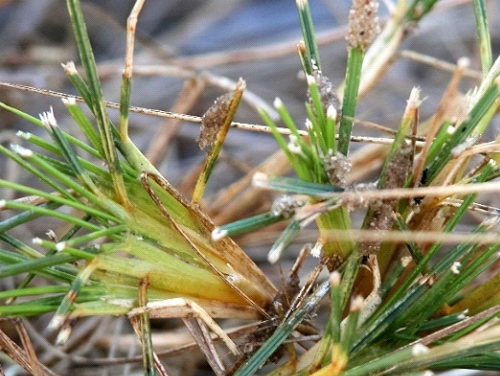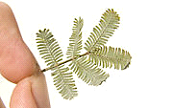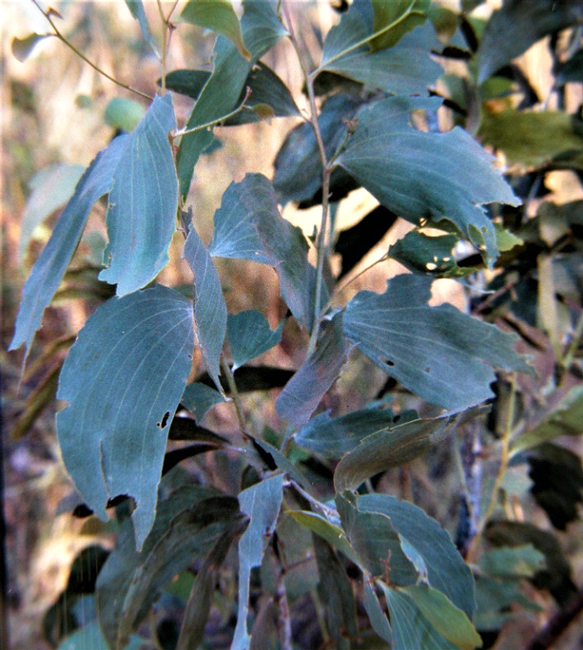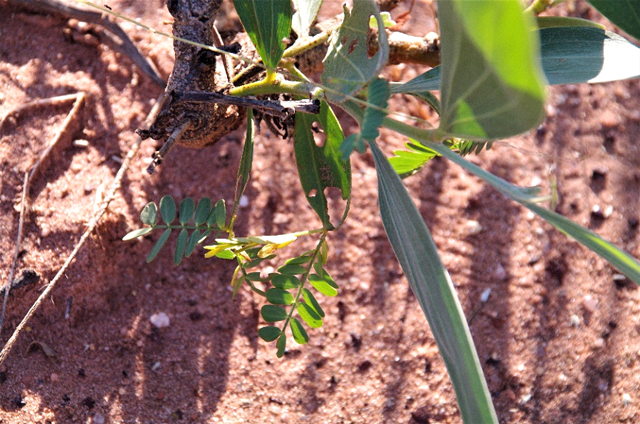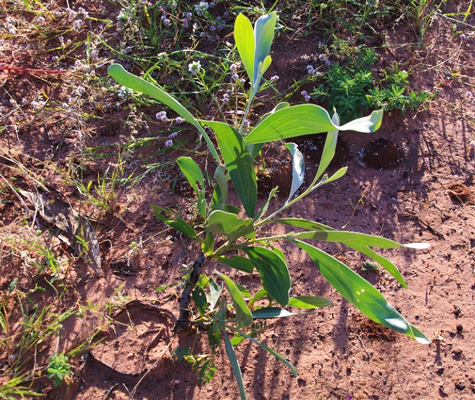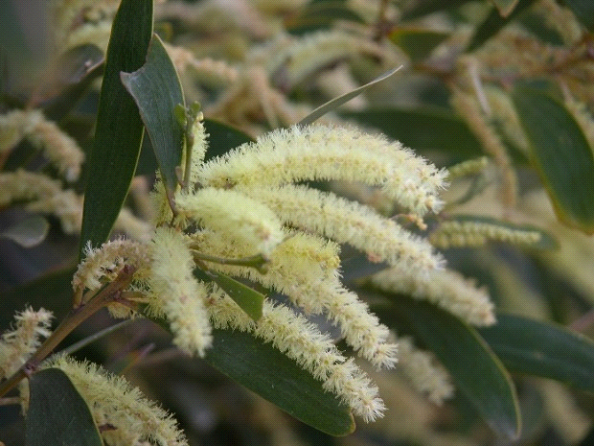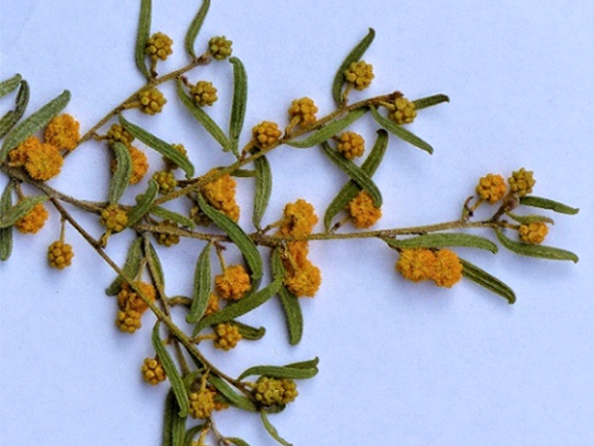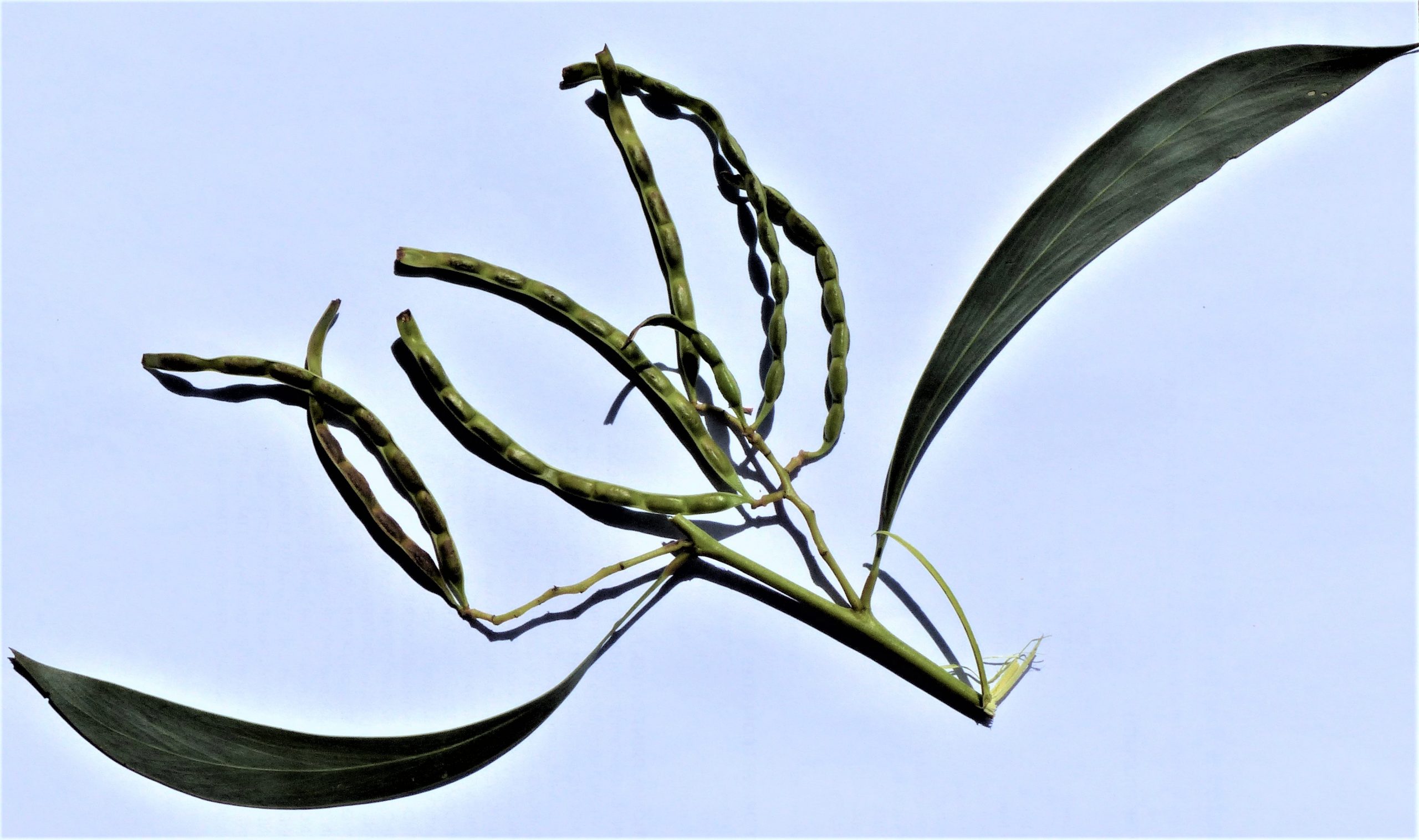Spinifex and Spinifex

Spinifex and Spinifex
Spinifex may be a confusing name since Spinifex is the generic name for example of the hairy and the long leafed spinifex, a grass that trails over the dunes behind the beach. Spinifex (not including italics) is the common name for a group of porcupine grasses that often grow as hummocks.
Spinifex-the genus
In southern Australia hairy spinifex, Spinifex hirsutus predominates and in the north a long-leafed species, S. longifolius is common in sandy beach environments.
Interestingly these Spinifex species have both male and female plants. They look to be the same except at flowering when the male inflorescence is smaller than that of the female. At maturity the female plants produce a ball-like structure about the size of a baseball that once mature breaks away from the parent and may be rolled around by the wind so spreading the seeds held with it. Spinifex produces long stoloniferous shoots that spread over the sand with roots developing from some of the nodes (swelling along the stem). In total these sand-binding plants tend to stabilise the windblown sand of the dunes.
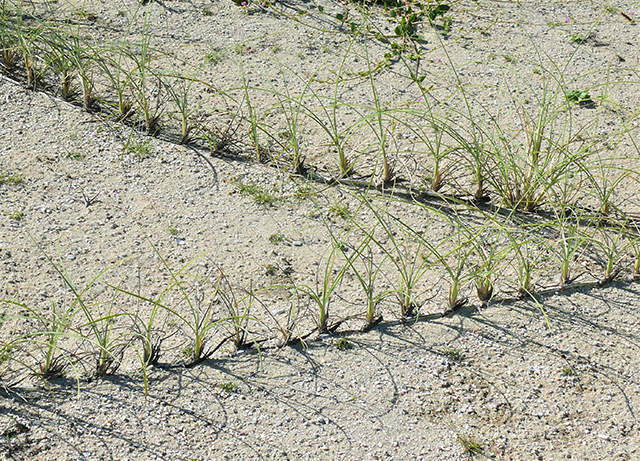
Spinifex longifolius from hind beach on mainland, west of Winyalkan Island, Kimberley WA.
Note the many shoots arising from a horizontal stolon/rhizome that spreads the plant
and sends down roots that help stabilise sand movement.
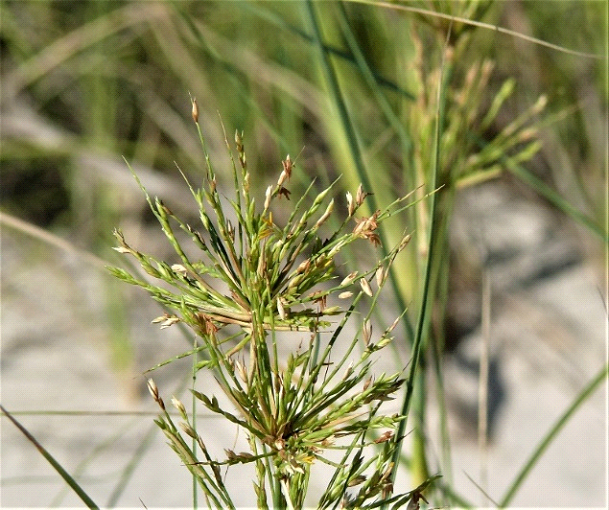
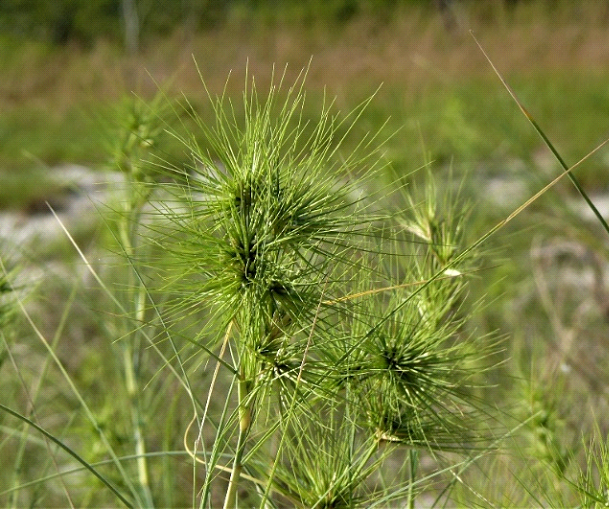
Spinifex -the common name
As a moisture conserving adaptation, several species of Triodia roll up along the midline of their upright leaves. These become stiff and the folding protects the surface of the leaf bearing the leaf pores, the stomates. The ends of these leaves may be quite pointed and sharp and were complained about by many of the inland explorers who were not ready for this assault on their legs. It is this characteristic that has led to suggestions that ‘porcupine grass’ may be a more apt as a common name than ‘spinifex’. With some exceptions this type of leaf is not attractive to most herbivores and their spiny nature offers protection to small mammals that live under the plant. Much of the leaf stiffness is due to the presence of silica either incorporated in the walls of some of the epidermal (surface) cells or as cells with microscopic concentrations of silica referred to as silica bodies. It is possible to find small plants amongst the larger plants that are constantly grazed by animals such as the short-eared rock wallaby. It would appear that these animals are nibbling on young leaves and not the older (tougher?) leaves.

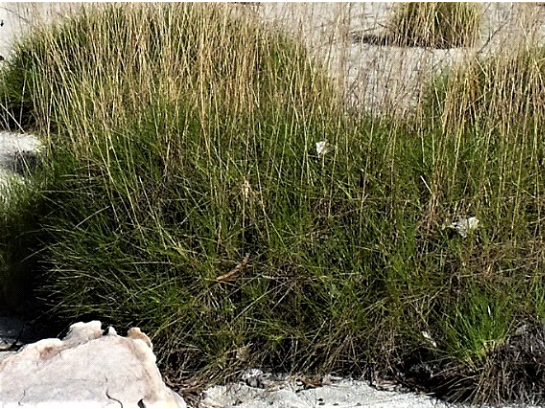
(L) Hummock of T. microstachya and (R) close up of their flower stems
and the short pointy green leaf base. Wary Bay, Bigge Island, Kimberley WA.
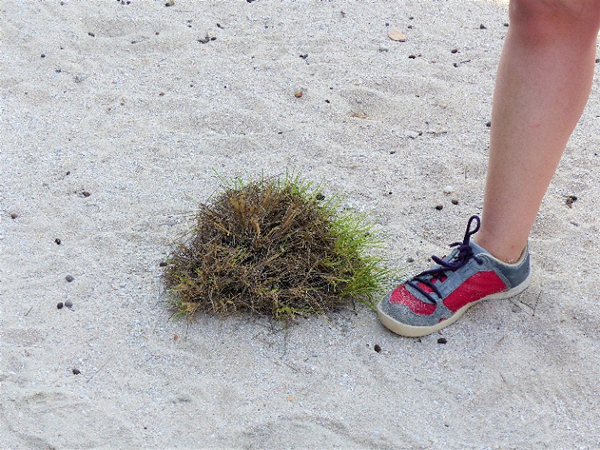
A well grazed hummock of Triodia sp. Note the many tell-tale scats
of the short-eared rock wallaby. Mainland west of Winyalkan Island, Kimberley WA.
As the plants age growth continues outward from the hummock base and eventually the centre of the plants dies. It is this phenomenon that leads to the production of circular plants with growth at their perimeter but the centre of the ring has the dead remnants of earlier growth. The rings often with complete perimeters may reach 10s of metres across.
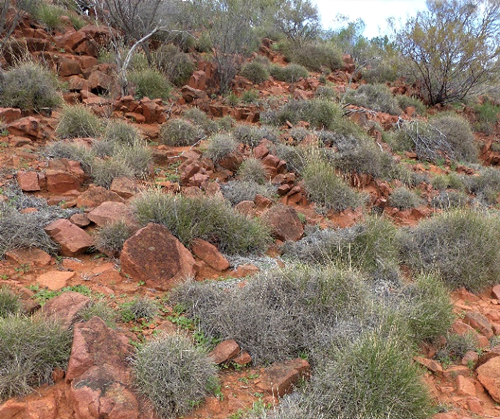
Hummocks of Triodia sp. Gawler Ranges National Park
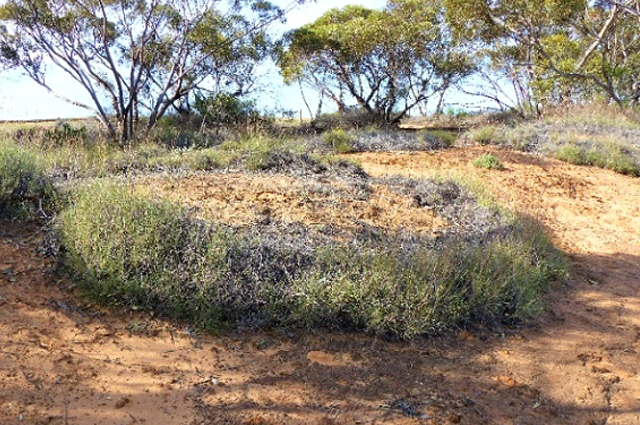

Rings of Triodia sp. hummocks, (L) roadside north of Karoonda, SA.
(R) Sand plain Wary Bay, Bigge Island, Kimberley WA.
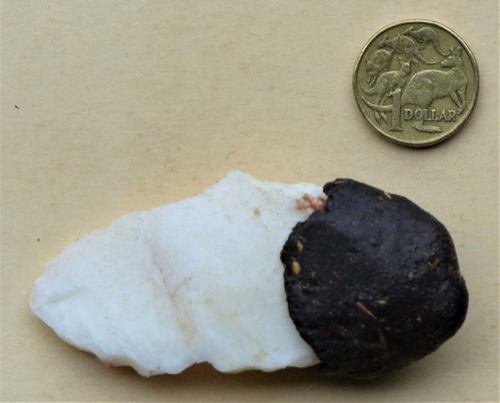
Central Australian Aboriginal quartz scraper with a Triodia sp. resin ‘handle’.
(Scale Aus$1 coin.)
Several of the porcupine grass species produce a gummy resin on their leaves which may be felt and smelt. In these species the gum accumulates as a solid mass at the base of the leaves over time and becomes particularly obvious after the plants have been burnt. This material is a mixture if the gum and pieces of the stem and is collected by Aboriginal people and used the attach tips to spears, to form the smooth section of a stone knife and scrapers and for example to patch holes in a coolamon, the multipurpose carrying vessel.
The value of this material is it has thermosetting properties and is soft and pliable when heated up but hard at ambient temperatures. The resinous leaves make clumps of this species quite flammable and when burnt it issues a black smoke and is reported as an Aboriginal signalling device.
An interesting find
While most of the porcupine grass on Bigge Island on the Kimberley coast WA grows on the sandy sections, I have found one area between the sandstone rocks where the Triodia sp. plants are not rounded hummocks of porcupine grass but chewed off plants with most green shoots less than 10cm high. The tips of fresh growth are likely to be grazed by Monjon (Petrogale burbidgei) a small rock wallaby that lives on the island. Over the rock and bare sand there are also tunnels constructed by spinifex ants (Ochetellus flavipes) that use the resin produced by the grass to stick the sand together. The tunnel runways also extend to the plants many of which have cylinders of sand grains, also constructed by the ants, attached to their stems. Within these cylinders that the ants tend sap-sucking mealybugs that produce honey dew that is then consumed by the ants. This mutualistic relationship between the ant and the bug is limited to the fresh shoots of the stunted Triodia. But there are other interesting relationships to consider including the herbivorous consumer Monjon and the producer Triodia, the constructing and consuming spinifex ants and the mealybugs that parasitise the plant!
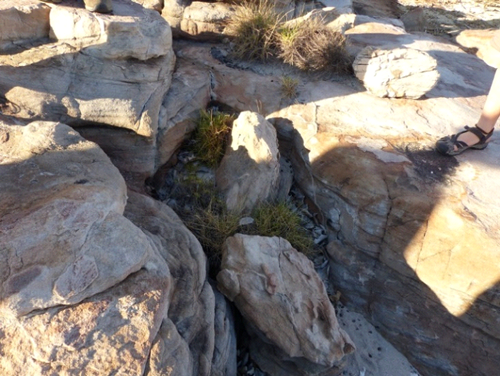
of the sandal. Rock platform north side of Wary Bay, Bigge Island, Kimberley WA
